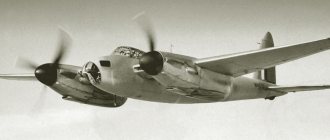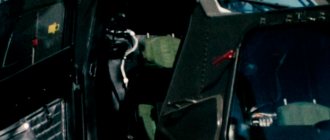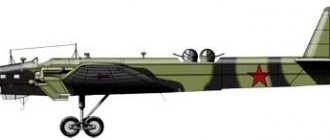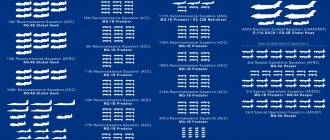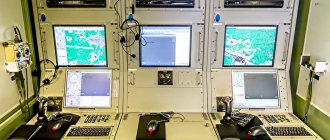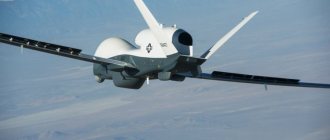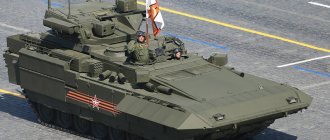Share the news with your friends
The MQ-1 Predator is an American remotely operated (RPA) UAV built by General Atomics. Originally conceived in the early 1990s for aerial reconnaissance, the Predator can be equipped with cameras and other sensors. It was subsequently upgraded to carry two Hellfire AGM-114 missiles or other ammunition. In 1995, the drone was put into service; it participated in combat operations in Afghanistan, Pakistan, Bosnia, Serbia, Iraq, Yemen, in the Libyan civil war in 2011, and in the 2014 intervention in Syria and Somalia.
Development
The CIA and the Pentagon began experimenting with unmanned reconnaissance vehicles (drones) in the early 1980s. The CIA preferred small and lightweight drones, in contrast to the US Air Force, which also saw drones as a strike force. In the early 1990s, the CIA became interested in the Amber UAV, developed by Leading Systems, Inc. The company's owner, Avraham Karem, was formerly the chief designer of the Israeli Air Force and immigrated to the United States in the late 1970s. Karem has created a quiet engine for UAVs that used to sound like “lawn mowers in the sky.” The new development became known as the "Predator".
General Atomics Aeronautical Systems (GA-ASI) was awarded the contract to develop the Predator in January 1994. The first flight of the new drone took place on July 3 of the same year at El Mirage (an airfield in the Mojave Desert). As a result, three sets were purchased from GA-ASI, consisting of twelve unmanned aerial vehicles and three ground control stations.
From April to May 1995, Predator drones were tested as part of the Roving Sands 1995 exercise in the United States. The tests were successful, and they decided to use the new system in the Balkans in the summer of 1995.
The Predator system was originally called the RQ-1 Predator. "R" is the United States Department of Defense designation for reconnaissance, and "Q" refers to an unmanned aircraft system. The "1" designates the UAV as the first in a series of aircraft systems built for unmanned reconnaissance. In 2002, the USAF officially changed the designation to the MQ-1 ("M" for multi-role) to reflect its expanded functionality as an armed drone.
History of formation
The concept of creating a combat robot is attributed to Leonardo da Vinci, who at the end of the fifteenth century created a model of a mechanical knight capable of moving his limbs and raising his visor. But, like many other ideas of the great Leonardo, the “mechvorior” was centuries ahead of its time, and therefore it was not possible to bring the project to life.
Robotic knight by Leonardo da Vinci (XV century)
At the end of the nineteenth century, Nikola Tesla built a miniature radio-controlled boat, and Pafnuty Chebyshev built a walker capable of moving over rough terrain. Both of these developments in one way or another influenced the development of robotics, including military ones.
Chebyshev's hike (late 19th century)
The very word “robot” belongs to the pen of the Czech science fiction writer Karel Capek, who in 1921 wrote the play “Rossum’s Universal Robots”. The first truly operational combat robots appeared in the 1930s.
Thus, in 1933, a reusable unmanned aerial vehicle (UAV) called the Queen Bee entered service with the Royal Air Force of Great Britain. There were two modifications of the aircraft: wheeled and hydro, of which almost fifty were produced during the existence of the project. The Queen Bee squadron was based on the British aircraft carrier Argus.
Queen Bee unmanned aircraft (mid 1930s)
In the early 1940s, in the USSR there was a battalion of remote-controlled tanks - teletanks, numbering more than fifty combat vehicles. They performed a variety of tasks: from checking the area for mines to shooting at the enemy during a chemical attack.
Soviet radio-controlled tanks T-26 (Soviet-Finnish War)
The German Goliath self-propelled mines were also remembered during World War II. They were small wedges (one and a half meters long and half a meter high), which were controlled by wire and carried up to 100 kg of explosives on board. This was enough to destroy an entire detachment of enemy infantry and any, even the most armored tank of that time.
German self-propelled mines "Goliath" (World War II)
Command and sensor systems
During the campaign in the former Yugoslavia, a Predator pilot sat in a van near the runway of the drone's operating base. The operator controlled the takeoff from the runway and the climb using radio signals. Over time, control began to be carried out through military satellite networks linked to the pilot's van. The operator was forced to deal with a delay of several seconds between the movement of the joysticks and the response of the drone. However, by 2000, the progress of communication systems made it possible, at least theoretically, to get rid of this inconvenience. It was no longer necessary to use direct radio signals during the Predator's takeoff and recovery. All phases of the flight could be monitored by satellite from any control center, and the CIA proposed the first fully remote Predator flights over Afghanistan, piloted from the agency's headquarters in Langley.
The Predator's avionics and sensors are controlled from a ground station via direct link data link or via Ku-band satellite for beyond-line-of-sight operations. The crew at the ground control station consists of one pilot and two operators. The drone is equipped with an AN/AAS-52 multispectral targeting system, a color nose camera (typically used by the pilot for flight control), a variable aperture daytime camera, and a variable aperture thermographic camera (for low light). Previously, Predators were equipped with synthetic aperture radar for seeing through smoke, clouds or fog, but this system was removed due to lack of demand to reduce weight and save fuel. The cameras capture video in real time, and the synthetic aperture radar receives still radar images. The data channel has sufficient bandwidth to broadcast video from two sources simultaneously.
What's next for UAVs?
There are several most promising areas for the development of unmanned aerial vehicles.
One of these areas (Optionally Piloted Vehicles) is the creation of combined vehicles that can be used in both manned and unmanned versions.
Another trend is to reduce the size of attack UAVs and create smaller types of guided weapons for them. Such devices are cheaper both to manufacture and to operate. Separate mention should be made of kamikaze drones, capable of patrolling over the battlefield and, after detecting a target, upon the operator’s command, diving onto it. Similar systems are being developed for non-lethal weapons, which are supposed to disable enemy electronics with a powerful electromagnetic pulse.
An interesting idea is to create a large group (swarm) of combat drones that would jointly carry out a mission. The drones included in such a group must be able to exchange information and distribute tasks among themselves. Functions can be completely different: from collecting information to attacking an object or suppressing enemy radars.
The prospect of the emergence of fully autonomous unmanned vehicles that will independently find targets, identify them and make a decision to destroy them looks quite frightening. Similar developments are underway in several countries and are in their final stages. Work is also currently underway on the possibility of refueling UAVs in the air.
Deployment method
Each Predator UAV can be disassembled into six main parts and placed in a special container. This allows you to quickly deploy the system and supporting equipment anywhere in the world. The largest component is the ground control station, which is carried by a C-130 Hercules transport aircraft. The basic Predator satellite communications package consists of a 6.1-meter (20-foot) satellite dish and ancillary equipment. Satellite communication provides communication between the ground station and the UAV beyond the line of sight and is a link with communication channels broadcasting secondary reconnaissance data. The RQ-1A requires a runway measuring 1,500 by 40 meters (5,000 by 125 feet) of hard surface in clear visibility conditions.
What are drones?
Today, there are many unmanned aerial vehicles that differ in size, appearance, flight range and functions. In addition, UAVs can be divided according to the control method and the degree of their autonomy. They are:
- uncontrolled; remotely controlled; automatic.
Based on their size, which determines most other characteristics, drones are divided into:
- micro (up to 10 kg); mini (up to 50 kg); midi (up to 1 ton); heavy (weighing more than a ton).
The devices that are included in the mini group are capable of staying in the air for no more than one hour, mini - from three to five hours, and medium - up to fifteen hours. If we talk about heavy UAVs, the most advanced of them can already stay in the sky for more than a day and make intercontinental flights.
Armed versions
On June 21, 2000, the USAID BIG SAFARI program office began developing weapon options for the drone. As a result, the UAV received reinforced wings and pylons for mounting ammunition, as well as a laser target designator. On February 16, 2001, RQ-1 conducted the first launch of the AGM-114C Hellfire anti-tank missile. The shell successfully hit the tank target. Later in a series of tests on February 21, 2001, the Predator fired three Hellfire missiles, hitting the stationary tank's turret with all three missiles. After the February tests, we moved on to more complex tests simulating the destruction of moving targets from high altitudes with a more advanced version of the AGM-114K missile launcher. As a result, the modification was adopted, and the Predators received the new designation MQ-1A. Because this UAV is relatively quiet and its Hellfire missiles are supersonic, it is capable of hitting a target before it even notices it.
Exploitation
As of March 2009, the USAF had 195 MQ-1 Predators and 28 MQ-9 Reapers. Predators and Reapers fired missiles 244 times in 2007 and 2008 in Iraq and Afghanistan. A March 2009 report found that the Air Force lost 70 Predators in crashes during their operational life, with 55 of them lost due to equipment failure, operator error or poor weather conditions. Five were shot down in Bosnia, Kosovo, Syria and Iraq. Another 11 were lost due to accidents in combat situations.
On October 22, 2013, the Air Force's MQ-1 Predators and MQ-9 Reaper remotely piloted drones reached a combined 2,000,000 flight hours.
On March 9, 2022, the USAF officially "retired" the MQ-1 Predator from operational service. The device was first deployed in 1995, and in 2011 the last of 268 predators was accepted into service, of which just over 100 remained in service by early 2022. Despite the fact that the Predator was gradually replaced by the heavier and more powerful MQ-9 Reaper, it continues to be upgraded to the MQ-1C Gray Eagle standard for the US Army, as well as for several foreign countries.
Notes
- ↑
- ↑
- ↑
- ↑
- ↑
- . rnd.cnews.ru (March 22, 2010). Retrieved March 22, 2010.
- ↑ Incidents // “Foreign Military Review”, No. 2 (671), 2003. p.41
- ↑
- ↑
- Incidents // “Foreign Military Review”, No. 10 (643), 2000. p. 33
- Incidents // “Foreign Military Review”, No. 9 (654), 2001. p. 40
- ↑
- Incidents // “Foreign Military Review”, No. 2 (659), 2002. p. 39
- Incidents // “Foreign Military Review”, No. 6 (663), 2002. p. 40
- Aviation losses of coalition forces in the war with Iraq according to foreign media // “Foreign Military Review”, No. 4 (673), 2003, p. 24
- IRAQI-313.
(ar.). وكالة أنباء براثا (August 9, 2019). Retrieved August 17, 2022. - Elena Plavskaya.
. Izvestia (August 9, 2019). Retrieved August 17, 2022. - The Military Balance 2022, p.41,49,56,57
- The Military Balance 2016, p.54
- ↑ Smirnov, Sergey
. Vedomosti (December 17, 2009). Retrieved December 18, 2009. - ↑ (English).
Modifications
- MQ-1A Predator : early airframes capable of carrying ammunition;
- MQ-1B Predator : Later airframes capable of carrying ordnance. Air intakes for the Rotax engine have been enlarged;
- MQ-1B Block 10/15 : includes updated avionics, upgraded AN/AAS-52 multi-role targeting system, anti-icing equipment, infrared cameras in the nose;
- MQ-1C : The US Army adopted this version as a multi-role UAV in August 2005. The drone was renamed MQ-1C Gray Eagle in 2009.
Performance characteristics of the MQ-1 Predator
General characteristics
- Operators : three people;
- Length : 8.22 m;
- Wingspan : 14.8 m; MQ-1B Block 10/15 : 16.84 m;
- Height : 2.1 m;
- Wing area : 11.5 m2;
- Empty weight : 512 kg;
- Cargo weight : 1020 kg;
- Maximum take-off weight : 1020 kg;
- Powerplant : 1 x Rotax 914F.
Performance
- Maximum speed : 217 km/h;
- Cruising speed : 130-165 km/h;
- Stall speed : 100 km/h;
- Flight radius : 1200 km;
- Flight duration : 24 hours;
- Ceiling : 7620 m.
Armament
Two pendants on which weapons are attached.
Rockets:
- 2 x AGM-114 Hellfire ;
- 4 x AIM-92 Stinger ;
- 6 x AGM-176 .
Avionics:
- ASIP-1C;
- AN/AAS-52;
- AN/ZPQ-1.


